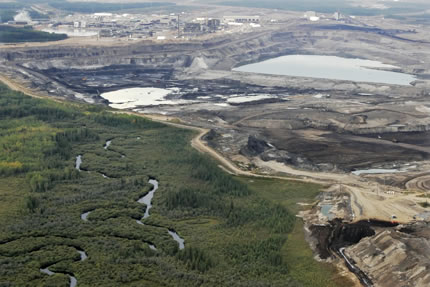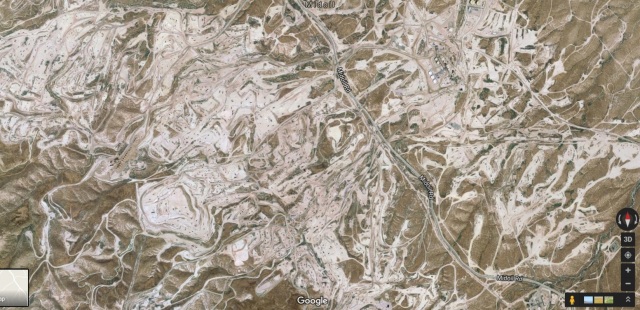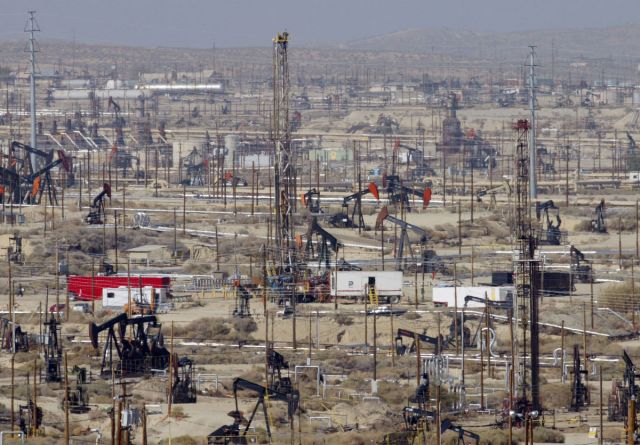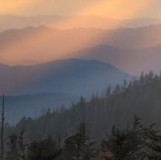Not all oils are created equal. Crude oil, which is not yet refined into gasoline and other products, ranges from thick and black to rather light and yellowish. Among the “cleanest” oils is Bakken, fracked from North Dakota. It has the consistency and look of soy sauce. There are stories of truck drivers putting it straight into their vehicles,

Dug from the soil underneath the Canada’s taiga forest, tar sands mines are a poster child of apocalyptic habitat destruction.
unrefined, and driving. This is why Bakken oil is so flammable in rail accidents. At the other end of the spectrum is Canadian tar sands, widely known as the dirtiest of oils. It has to be heated or mixed with a diluent just to move it. When one calculates all the oil it takes just to extract that oil and transport it, and how low quality it is and how much energy it takes to refine it, the carbon footprint of tar sands is several times that of other oils. Its Carbon Intensity (CI), a measure of well-to-gas-tank CO2 equivalent emissions per unit of energy (gCO2e/MJ), generally ranges from 24 to 35. In comparison, the CI of most light crudes, such as Bakken or Saudi Arabia Light, is about nine.

The top 80% of California’s oil supply is on this graph. Domestic oil is shown in blue. Heavy oils are on the right (darker circles), lighter oils on the left. Note Canada Tar Sands with a CI of 24. Date source: California Air Resources Board.
California is one of the top oil producing regions in the world. It trails only Texas and North Dakota as the top oil producing state in the US, which is now neck-and-neck with Saudi Arabia and Russia as the top oil producing nation in the world. The curious thing about California, however, is that, due to its complex geography, the quality of its oil is highly variable, ranging from cleaner than Bakken to dirtier than tar sands. The CI of California’s crudes varies dramatically from field to field and even well to well.

Both tar sands and the Midway-Sunset field (above) are easy to spot using Google Earth. The Midway-Sunset field is located west of Bakersfield along Highway 33, stretching from McKittrick in the north, through Taft, to Maricopa in the south.
California has four significant oil fields that have CI’s higher than tar sands: Midway-Sunset, San Ardo, Coalinga, and Kern Front. Together, these make up almost 8% of California’s oil supply. (Tar sands made up less than 1% in 2015 and is probably zero at the moment.) The Midway-Sunset field is also the largest field in California, itself providing 4.6% of the state’s oil.

Oil producers have built several power plants in the Midway-Sunset field to inject steam into the ground to force the oil up. Sometimes this liquefies the sandy soil, creating hot sinkholes (poetically called “surface expressions”), which occasionally swallow workers.
One of the obvious strategies to minimize greenhouse gas emissions is to keep the dirtiest oil in the ground. If California were to simply shut down these fields and substitute this oil for Saudi Arabia Light or a similar light oil, the reduction in CO2 emissions would be equivalent to reducing California’s oil consumption over 5%.
But absent a law restricting oil over a certain CI, which is unlikely, California relies on its cap-and-trade system to lower greenhouse gas emissions. Under this system, certain businesses must by “permits to pollute” through a state-run market. They may buy and sell these permits amongst each other. Since 2014, Quebec has joined the program, making it one giant market across the two entities. Based on the CI levels, producers of California’s dirtiest oil would have to buy three times more permits than those producing or importing light oil. To date, this has been a low hurdle for them and has not curtailed production. The cost of the tradable permits is low (because the cap is so high), so that producing oil from dirty fields is still more profitable than selling the permits to a cleaner operation.


Some more recent links:
How Dirty Crude Undercuts California’s Climate Progress
Click to access Oil_Stain.pdf
109 elected officials tell Gov. Jerry Brown to get oil out of California